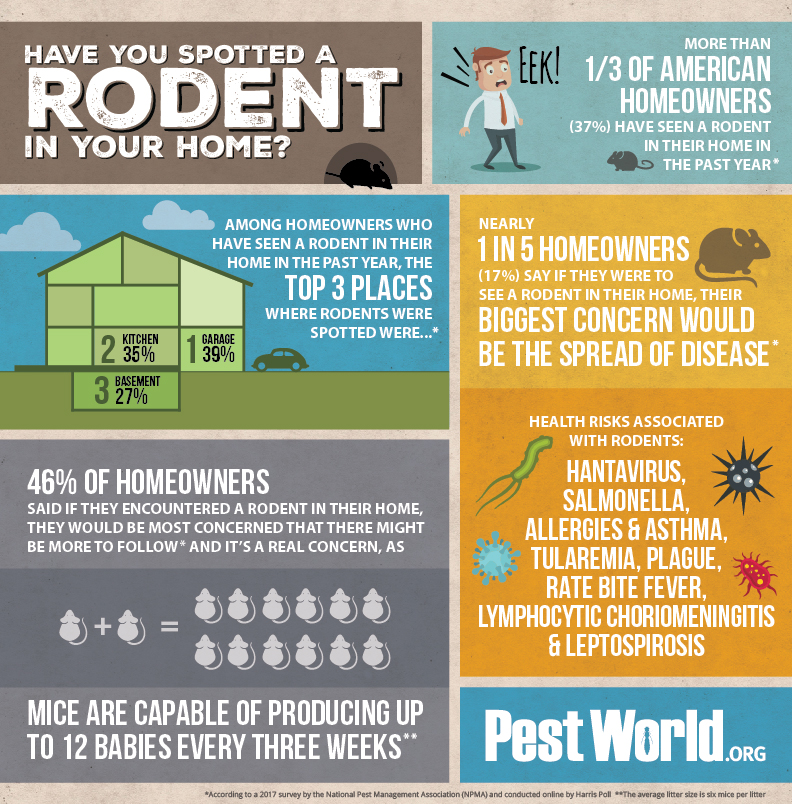Rodent-Proofing Your Outdoor Room: Techniques For A Pest-Free Backyard
Rodent-Proofing Your Outdoor Room: Techniques For A Pest-Free Backyard
Blog Article
Material Written By-Christensen Cormier
Did you know that rats can press via openings as tiny as a quarter? Think of https://www.abc57.com/news/summers-spotlight-nonprofit-cares-for-wild-animals-in-need for your outdoor room. From munching on plants to nesting in comfortable edges, these insects can wreak havoc if offered the opportunity. But worry not, there are useful approaches you can use to maintain your backyard rodent-free. By taking straightforward actions to seal entrance factors and keep a tidy atmosphere, you can create a citadel versus unwanted furry site visitors. So, are https://cristianvqlez.webdesign96.com/27055328/discover-the-hidden-burglars-besides-bed-insects-prowling-in-your-household-presenting-a-threat-to-your-living-area-in-surprising-ways-keep-yourself-educated-to-safeguard-your-safe-haven set to secure your outdoor haven from these pesky trespassers?
Identify Access Information
To efficiently rodent-proof your outdoor room, begin by identifying potential access points. Check your lawn for any gaps or openings that rats can utilize to get. Examine locations such as spaces under doors, holes in the walls, or openings around utility infiltrations. Bear in mind that mice can squeeze via holes as small as a dollar, so be comprehensive in your exam.
Concentrate on areas where energies enter your home, such as where pipelines, cords, or wires go into the structure. Seal any type of gaps around these access factors with materials like steel wool or caulk. In addition, look for any kind of cracks in the structure or spaces in the house siding that could function as entrance factors for rodents.
Pay very close attention to areas where plant life meets your home, as thick plants can give hiding spots and very easy accessibility for rodents. Trim back any type of looming branches or shrubs that could be utilized as bridges to your house. By recognizing and sealing off these access points, you can substantially decrease the possibilities of rodents invading your outdoor space.
Implement Exclusion Actions
Checking and sealing entrance points is the very first step in rodent-proofing your outside space; currently you'll act by implementing exemption actions.
Beginning by mounting door brushes up on all outside doors to stop rodents from pressing through voids. Seal splits and gaps with weather-resistant sealer, concentrating on areas where energy pipes enter your home.
Usage wire mesh to cover vents and smokeshafts, ensuring they're safely affixed. Trim tree branches and vegetation far from your home to get rid of possible bridges for rodents to access your roof.
In addition, take into consideration setting up steel flashing around the base of your home to avoid burrowing. Store fire wood at the very least 18 inches off the ground and far from your home.
Maintain trash in tightly sealed containers, and quickly clean up any type of splashed birdseed or pet food. By carrying out these exemption steps, you can dramatically decrease the likelihood of rodents attacking your outdoor area.
Maintain Tidiness and Trimmed Landscaping
Guarantee your outside area stays tidy and your landscape design is regularly trimmed to prevent rodents from locating harborage or food sources. Keeping your yard tidy is key to reducing destinations for rats. Remove any type of debris, clutter, or extra things that might function as concealing areas for these parasites. Rodents are attracted to locations with very easy access to food and shelter, so by maintaining sanitation, you make your residential or commercial property much less appealing to them.
Frequently cutting your landscape design is additionally essential in rodent-proofing your outside space. Overgrown plant life gives rats with adequate hiding areas and potential nesting sites. By keeping your lawn cut, bushes trimmed, and trees trimmed, you get rid of possible habitats for rats. In addition, trimmed landscaping makes it harder for rodents to access your home as they favor locations with ample coverage for defense.
Conclusion
Finally, by taking the time to rodent-proof your exterior space, you can make sure a pest-free lawn for several years ahead. Keep in mind to on a regular basis evaluate for access factors, implement exclusion procedures, and maintain your backyard tidy and well-kept.
With over the counter flea treatment in place, you can appreciate a relaxed and rodent-free exterior atmosphere. So, don't delay - begin rodent-proofing today and bid farewell to undesirable pests in your lawn!
